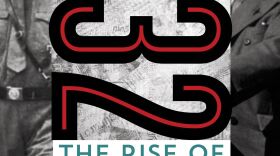On January 6, 1941 President Franklin Delano Roosevelt’s delivered his “Four Freedoms” speech to Congress as the nation grappled with entering World War II. Seventy five years later two area museums are commemorating the anniversary of ideals laid out by our nation’s longest-serving president.“In the future days, which we seek to make secure, we look forward to a world founded upon four essential human freedoms,” said President Roosevelt during the speech.
More than 30 minutes into his 1941 State of the Union Address, President Roosevelt outlined four ideals that would serve as rallying calls for Americans during World War II.
“The first is freedom of speech and expression--everywhere in the world,” President Roosevelt continued. “The second is freedom of every person to worship God in his own way--everywhere in the world. The third is freedom from want--which, translated into world terms, means economic understandings which will secure to every nation a healthy peacetime life for its inhabitants-everywhere in the world. The fourth is freedom from fear--which, translated into world terms, means a world-wide reduction of armaments to such a point and in such a thorough fashion that no nation will be in a position to commit an act of physical aggression against any neighbor--anywhere in the world.”
The ideals were depicted in theater and visual art, the most famous being a series of paintings by Norman Rockwell published in four editions of the Saturday Evening Post in early 1943. Norman Rockwell Museum director Laurie Norton Moffatt says the artist captured the patriotic imaginations of Americans in a time without the visual capabilities of television.
“Norman Rockwell had an incredible gift to take it to a human and very personal level,” she said. “What does this mean in your life? As a viewer would look at these pictures – tucking their children into bed safely and being free to worship any religion of their choosing without fear of government reprisal – these ideas really resonated more strongly after Norman Rockwell painted the imagery for them.”
A national tour of the paintings raised more than $130 million in war bonds. To commemorate FDR’s speech, the Stockbridge museum is holding a historical talk on the paintings that are part of the site’s permanent collection. The event starts at 1 p.m. Across the Massachusetts-New York border, the FDR Presidential Library and Museum is hosting a talk with author Harvey Kaye. In a live-streamed event, Kaye will discuss his book, The Fight for Four Freedoms: What Made FDR and the Greatest Generation Truly Great.
“Newspapers like The New York Times and others really did see the speech as significant because they began to recognize, that even though the United States was not about to enter the war, in many ways this was Roosevelt’s call to arms for Americans to really rev up the defense industry and become the arsenal for democracy,” said Kaye.
The event starts at 7 p.m. Kaye says there were varied responses to FDR’s speech with isolationists concerned about America going to war, conservatives wary of the freedom from want and fear while some African Americans heard a call for greater civil rights. Kaye says FDR’s belief of an economic declaration of rights, the New Deal programs and legislation enabling laborers to organize built up to the Four Freedoms address. As for the speech itself, Kaye says there were seven drafts that FDR worked on with his writers.
“I think it was at the fifth draft that they were in a meeting in the president’s office,” Kaye said. “Roosevelt apparently hesitated. They needed what was known as a peroration, these words that would be inspiring. Apparently he leaned back and there was this really long silence and then he eventually says to the assistant ‘Take this down.’ Without stopping he lays out the words of the Four Freedoms.”
The address is part of the FDR Presidential Library and Museum’s archives, currently undergoing a major digitization effort.
“[It] was much more than just a speech,” Sparrow said. “Throughout history there are very few speeches that have generated four internationally-known paintings by a great artist, but it inspired Four Freedoms Park in New York, created an international award with the Roosevelt Institute and the Roosevelt Institute in the Netherlands. It created a movement. There were articles, books, films and television shows about this. The four freedoms were the foundation for the United Nations’ Universal Declaration of Human Rights. It really was the germ of an idea that has grown into an enormous organism that touches almost everyone in the world.”
Director Paul Sparrow says there are transcripts and hard copies of more than 1,500 of FDR’s speeches dating back to 1898 linked to audio and video files if available.
“Some of them are quite famous,” Sparrow said. “The change in the ‘Day of Infamy’ speech where the first line used to be ‘December 7, 1941…a date which live in world history.’ You can see where he [FDR] crossed out the word ‘history’ and wrote in the word ‘infamy.’”
With a number of 75-year anniversaries related to World War II coming up over the next few years, the FDR Presidential Library and Museum – in 2020 – is hoping to create an international day of remembrance marking the anniversary of the president’s death.







